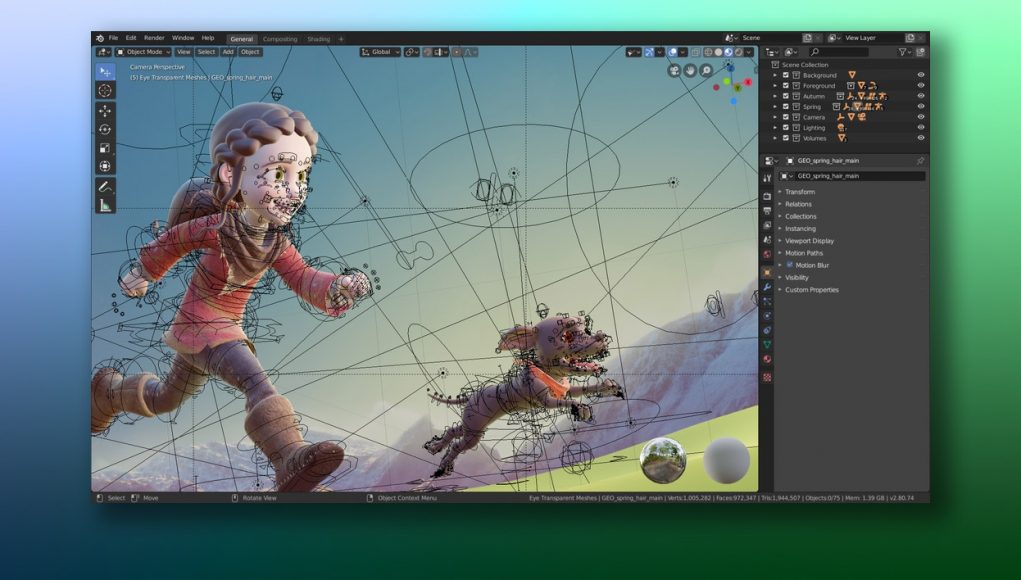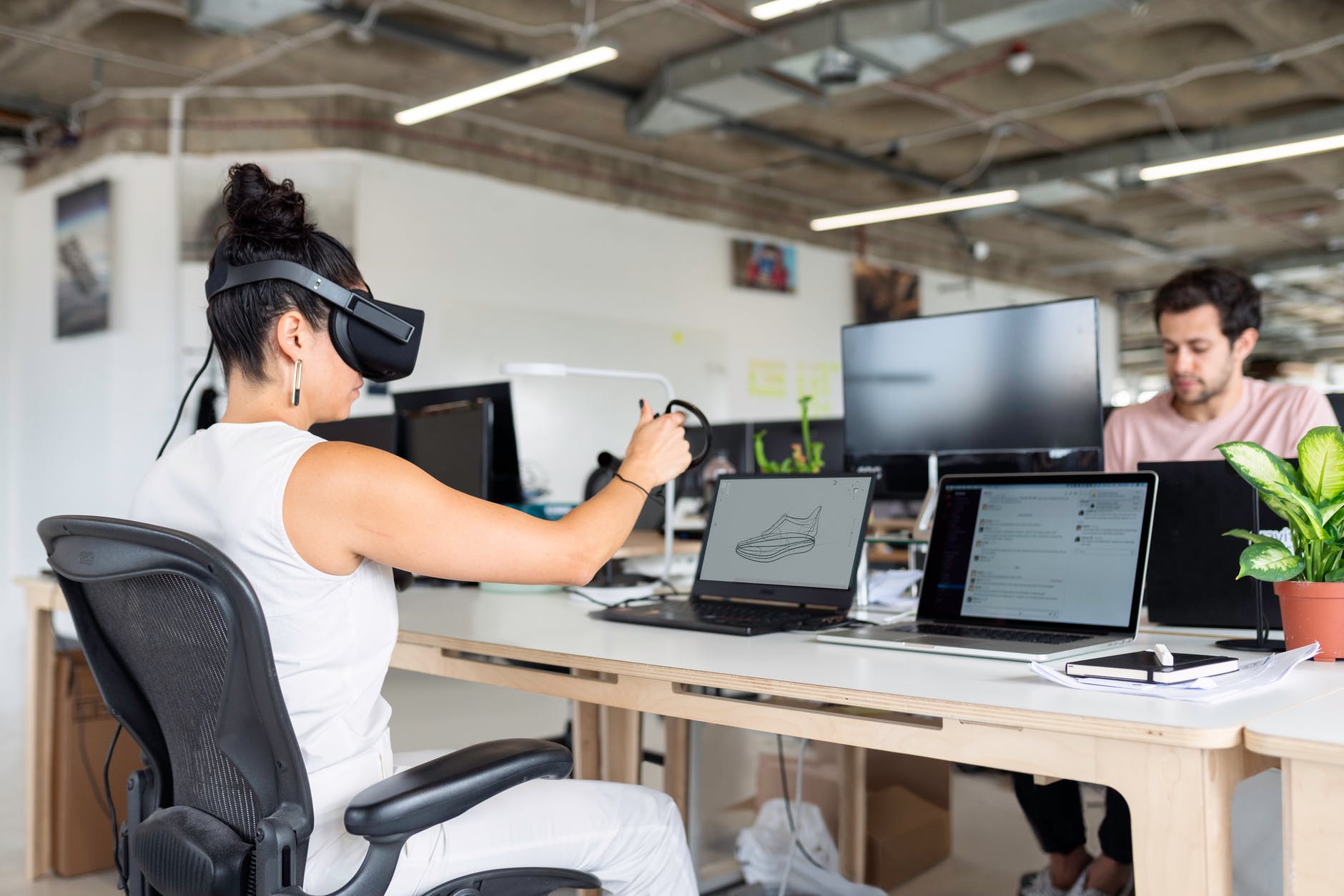Set yourself up for success within the immersive industry.
As we move into 2021, both the VR and AR industries exhibit a plethora of career development opportunities for aspiring developers. According to Tech Jury, the global AR and VR markets are expected to grow to $209.2 billion by 2022, with more than 171M users worldwide. Additionally, 14M VR and AR devices were sold in 2019 alone, with the global consumer market about to reach $2.6 billion by end of 2020.
How does this translate to career opportunities for app developers, UX designers, and 3D modelers among others? As more companies delve into VR and AR, the demand for specialists skilled in designing augmented experiences continues to rise. As such, now is the time to consider optimizing your CV for a career in VR or AR in order to land employment. Let’s discuss how to do so properly, as well as cover some of the paths you should consider pursuing in 2021.

VR & AR career paths to consider
When discussing VR and AR career opportunities, there are a number of paths you can choose to follow. Depending on what different companies specialize in and their business ideas, they will undoubtedly need experts in various VR & AR fields. Some of the career paths you should consider are:
- User interface and experience design (UI and UX)
- Software engineering
- 3D modeling
- Quality assurance (QA)
- Content production
- VR/AR production management
It’s always good practice to do some research on your local area and see what types of VR or AR companies are present around you. While you can apply for online and remote positions with your CV, employers are likely to prefer candidates who can join the team physically.
Prepare your skillset accordingly
Developers who aim for VR and AR careers will face fierce competition in terms of candidate skillsets. More specifically, these industries will require you to learn constantly in order to stay relevant in the job market. The skills you should develop before applying for jobs in VR or AR industries include:
- Baseline IT skills (PC and network management)
- Software development skills (C, C++, and related languages)
- 3D software skills (modeling, environment design)
- UX design skills (graphics and interface design)

There are a number of ways in which you can acquire these and other skills related to the VR and AR industries. Internships and volunteering opportunities in professional companies can prove useful in terms of setting the right expectations for how the industry really works. If you are still a student, you can study abroad or take additional academic courses that will enhance your skills in relevant fields. Online learning platforms like Udemy and Lynda can help you learn from home and at your own pace, so use them in your spare time.
Don’t neglect your soft skills
Regardless of whether you end up working remotely or in an office environment, you will have to cooperate with others on your team. VR and AR companies often work on designing hybrid events and projects which heavily lean toward teamwork, PR, or even guerilla marketing.
This is why most employees also put a large emphasis on soft skills in the CVs they receive for open job positions. While programming and 3D modeling may be crucial skills to learn, consider also pursuing some of the following in your free time:
- Solution-oriented thinking
- Diligent and organized work ethics
- Interpersonal skills and teamwork
- Objective and feedback oriented communication
- Leadership and project management skills
Do background research on the company
Once you start assembling your list of skills, you should also make a shortlist of companies to apply for. Every company will inherently ask for different things from the VR or AR developer they want to hire. Don’t create a single resume and send it to every posting you find– this won’t work in your favor and will come off as spam.
Make sure to properly research the company you are about to apply for before doing so. Explore their website, LinkedIn page, past projects, and any other publically available information to get a sense of their business culture. Prioritize the companies with which you identify and shape your resume based on their job post’s details.

Attach your portfolio pieces
Given that you will submit your CV in a digital format, you should use the opportunity to showcase your VR or AR skillset through samples. It’s quite easy to set up a GitHub or Behance profile and publish samples of your designs and codes for the employer.
Watermark all of your work just in case, but don’t pass on the opportunity to show what you can do through the CV. This will be seen as a proactive move and it will speak volumes of what you are capable of more than bullet points ever could.
Format your CV for easy scanning
Depending on how popular the company you apply for is, they are likely to receive dozens of CVs alongside your own. This can prove troublesome for your employment, as standing out from the crowd might be difficult.
You can make the employer’s reading experience of your CV easier by carefully formatting the document for easier scanning and skimming. Writing tools such as Hemingway Editor and Grammarly are great for optimizing the overall legibility of the text you write for the CV. Don’t simply rely on text editors such as Microsoft Office or Google Docs to do the job – make your CV as readable as possible.
Network in your spare time
You should use the downtime between writing your CV and applying for work by networking with VR and AR communities. This can be done both locally and online, so don’t pass on the chance to make connections with industry representatives early in your career. Visit your local freelance hub or look for seminars and conferences which focus on VR and AR industries. Online communities, forums, and platforms such as VRScout can offer useful insight into the market and its development on a global level.

You can refer to the insight and connections you’ve made in the industry during your job interview to showcase how well-informed you are. This can improve your career chances beyond the technical skillset you’ve acquired in preparation for your career in VR or AR respectively.
Building a future-proof career
Whether you choose to focus on 3D modeling, software development, or UX design in VR or AR, you can rest easy about your career path. Both VR and AR industries are here to stay with their active push into fields such as education, healthcare, and marketing. This means that you will have an easy time shifting between niches and expanding knowledge in both software and hardware development as you see fit.
Start by gauging your skillset against local companies’ employee expectations and working on your soft skills to match modern standards. Before you know it, the right employer will recognize your potential and bring you onboard based on the CV you wrote and your interview.
Feature Image Credit: ThisIsEngineering
The post How To Optimize Your CV For A Career In VR & AR appeared first on VRScout.




